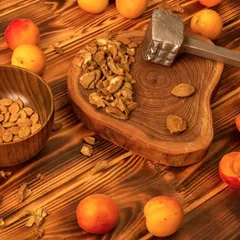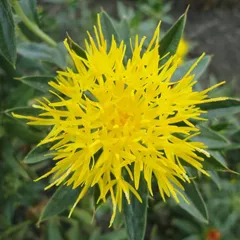Pericardium Blood Stagnation
The information provided here is not a replacement for a doctor. You shouldn't use it for the purpose of self-diagnosing or self-medicating but rather so you can have a more informed discussion with a professional TCM practitioner.
At a glance
Preliminary reading: What is a pattern? The Pericardium in Chinese Medicine The concept of Blood The concept of Blood Stagnation
Key attributes
Chinese name: 心包血瘀 Pinyin name: Xīn Bāo Xuè Yū
Pattern nature: Full
Pattern hierarchy: Specific pattern under Blood Stagnation
Causes
Precursor patterns: Liver Qi Stagnation Pericardium Qi Stagnation
Common causes: Emotional stress
Diagnosis
Common symptoms: Chest pain Purple lips Palpitations Purple nails Chest fullness and four other symptoms
Pulse type(s): Knotted (Jie), Wiry (Xian)
Tongue description: Purple on the side of the entire tongue
Treatment
Treatment principle: Regulate the Pericardium and the Heart, calm the Mind, invigorate Blood in the chest.
Common formulas: Xue Fu Zhu Yu Tang
Pathology
The Mind resides in both the Heart and the Pericardium and it can be greatly impacted by Blood Stagnation in both Organs. Therefore all mental related symptoms of Pericardium Blood Stagnation are very similar to the ones of Heart Blood Stagnation.
However, the chest related symptoms such as sensation of pain, stiffness or oppression only happen to the Pericardium as it is located in the middle of the chest. The Pericardium channel also go though the chest. The pain mentioned here is severe, like the feeling of stabbing or pricking in the chest. It can also spread to the inner aspect of the left arm or to the shower.
Due to the connection between the Pericardium and the Lung Channel, the patients may also experience light short of breath.
Finally, the patients may also have period cramps with dark and clotted menstrual blood. It is due to the relationship between the Pericardium and the Uterus.
Causes
Precursor patterns: Pericardium Blood Stagnation can derive from Liver Qi Stagnation Pericardium Qi Stagnation
Emotional stress : Prolonged emotional stress, such as anxiety, grief, worry and guilt has severe impact on Qi and Blood circulation, especially in the chest area. Actually the chest is regarded as the the most likely part of the body for accumulating negative feelings. In additional to that, the Mind, which use the Heart Blood as its physiological basis, can be greatly disturbed by these emotions. The constrains of the Mind can give rise to the Stagnation of Qi and Blood of the Heart and the Pericardium.
Diagnosing Pericardium Blood Stagnation
Diagnosing a pattern in Chinese Medicine is no easy feat and should be left to professional practitioners. In particular one has to know how to differentiate between different types of pulses and tongue coatings, shapes and colors as well as learn to read from a long list of seemingly unrelated symptoms.
Pulse type(s): Knotted (Jie) or wiry (Xian)
Tongue description: Purple on the side of the entire tongue
Main symptoms: Chest pain Purple lips Palpitations Purple nails Chest fullness Painful period Shortness of breath Dark clots in menstrual blood Stifling sensation in the chest
Diagnosis commentary: Key characteristic symptoms of this pattern are the stabbing chest pain and purple lips.
Treating Pericardium Blood Stagnation
Treatment principle
Regulate the Pericardium and the Heart, calm the Mind, invigorate Blood in the chest.
Herbal formulas used to treat Pericardium Blood Stagnation



The top herbs in Xue Fu Zhu Yu Tang are Peach Kernels (Tao Ren), Safflowers (Hong Hua) and Szechuan Lovage Roots (Chuan Xiong)
Xue Fu Zhu Yu Tang
Source date: 1830 AD
Number of ingredients: 11 herbs
Key actions: Invigorates the Blood. Dispels blood Stagnation. Spreads the Liver Qi. Unblocks the channels.
Formula summary
Xue Fu Zhu Yu Tang is a 11-ingredient Chinese Medicine formula. Invented in 1830 AD, it belongs to the category of formulas that invigorate Blood and dispel Blood Stagnation.
Besides Pericardium Blood Stagnation, Xue Fu Zhu Yu Tang is also used to treat Heart Blood Stagnation or Heart Vessel obstructed.
Related conditions
Please keep in mind that a Western Medicine condition can be caused by several Chinese Medicine patterns of disharmony and vice versa. As such a patient suffering from one of the conditions below will not necessarily be suffering from Pericardium Blood Stagnation, it is just one pattern that's commonly associated with the condition. Click on a condition to learn what other patterns it's associated with.
Hypertension Intercostal neuralgia Migraine Trigeminal neuralgia Depression Psychosis Coronary artery disease Rheumatic valvular heart disease Cor pulmonale Thoracic strains Costochondritis Postconcussion syndrome
Consequence patterns
The Liver and Pericardium channel are related within the Terminal Yin (Jue Yin) channels. Therefore Pericardium Blood Stagnation may cause Liver Blood Stagnation or vice versa.
Blood and Phlegm are two forms of Body Fluids and they have great impact of each other. Blood Stagnation condenses the Blood and thus accumulates Phlegm.
Prolonged Pericardium Blood Stagnation can cause Phlegm and lead to Dryness of other part of the body, especially in elderly patients.
